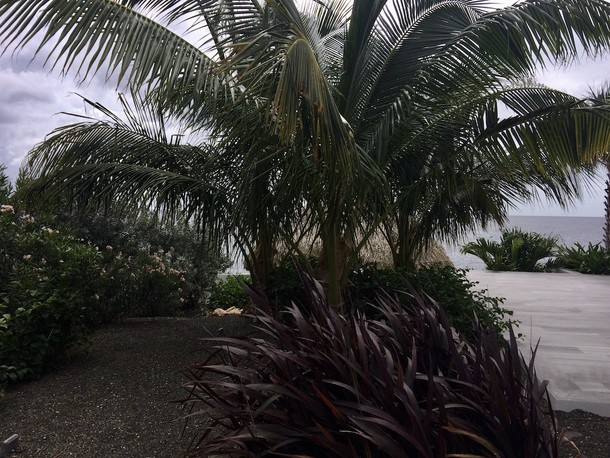Cocos nucifera or Cocos palm
The Cocos nucifera is found on many beaches around the world, wether or not naturally. Also planted around swimming pools. This palm tree is not native to Curaçao. With out irrigation or other water source this palm will not survive. It can withstand wind very well, if close to the coast and prolonged sea breeze, salt spray will burn the leaves and may kill the tree.
Land inward this palm is grown on plantations for its fruits (cocoswater, 'awa di coco') and to be used in landscaping.
Basically two types grow here: the so called 'dwarf Cocos palm' (Malayan, Golden Malayan, Green Malayan), which bears fruit with a brown, green or orange colors quickly. The other type is the 'Maypan' Cocos palm, that has a thickening at the base of the trunk and its leaves are longer then the 'Malayan' type.
The biggest disadvantage of Coconut trees on beaches and around pools, for instance in hotels and resorts, is the danger of falling coconuts.There for Coconut palms in those areas need more maintenance (timely removal of the still small nuts). In addition, there is almost always a scale aphid or aphid on the underside of the leaves. This causes discoloration of the leaves, they turn yellow. The aphid secretes a sticky substance. It falls on furniture, floors etc. If not removed in a timely manner, a fungus can grow on this aphid excretion which will cause black stains.



